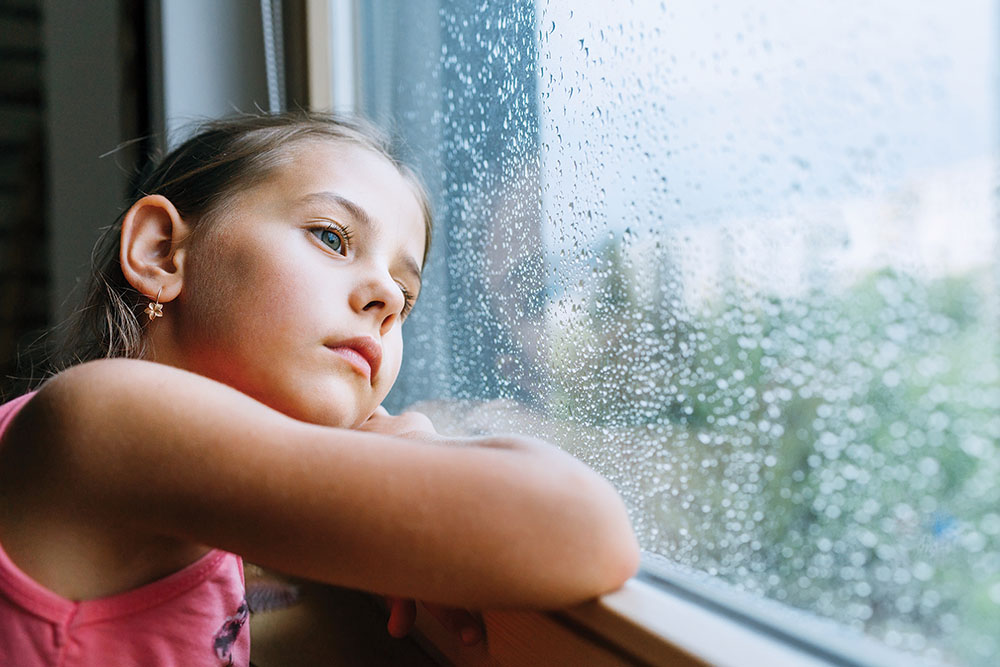
Rates of anxiety and depression among youth have soared over the course of the COVID-19 pandemic. Last fall, a coalition of the nation’s leading experts in pediatric health declared a national emergency in child and adolescent mental health. Due to structural inequities, this mental health crisis is worst among already vulnerable groups, such as low-income youth, LGBTQ youth, youth with disabilities and youth from communities of color.
However, even before the pandemic’s disruptions and fallouts, youth anxiety and depression were rising. Social media has played a role by disrupting sleep and exposing youth to cyberbullying and unrealistic views of other people’s lives and bodies.
For many children and teens antidepressants are an effective way to treat anxiety, depression and other mental health conditions, but under what circumstances should they be prescribed? What should parents know before considering antidepressants?
Prescription conundrums
If a child has mild depression, psychotherapy may be enough to help with the symptoms. If the depression is moderate or severe, “that’s when we consider medications,” says psychiatrist Dr. Sarah M. Edwards, medical director of the children and adolescent psychiatric unit at the University of Maryland Children’s Hospital.
Some signs that can signal a youth is severely depressed include having thoughts of suicide or changing eating, showering and basic grooming habits. Other signs are impaired academic performance and a pronounced loss of interest in activities the child previously enjoyed.
If left untreated, depression can lead to self-injury, addiction and suicide attempts. “Treating with therapy and medication works the fastest to help children with depression,” says Dr. Elana Neshkes, a pediatrician and child psychiatrist at Children’s National Hospital.
However, selective serotonin reuptake inhibitors (SSRIs), which are considered the first-line option for youth with depression, may cause or worsen suicidal thinking or behavior in a small number of children and teens. In 2004, the
FDA issued a black-box warning on SSRIs based on an extensive analysis of clinical trials.
The meta-analysis showed youth who took antidepressants had a 4% rate of suicidal thinking or behavior, as compared with 2% among those taking a sugar pill (placebo).
“There’s a lot of misinformation in the news and the internet about the black-box warning that scares parents,” says Dr. Josephine Elia, division chief of psychiatry at Nemours Children’s Hospital in Delaware.
None of the children in any of the studies died by suicide, she says. Additionally, an expanded black-box warning in 2007 stated that depression itself was associated with an increased risk of suicide. Some experts have questioned the validity of the initial black-box warning. Newer research suggests that the pros of antidepressants outweigh the cons.
“We often think that the benefit is worth that risk as long as there’s close monitoring and everyone knows what to expect,” says Dr. Hal Benjamin Kronsberg, a psychiatrist for Johns Hopkins Bayview Medical Center’s School-based Mental Health Program and the Child Mobile Treatment team.
Risk and signs of suicidality

Children should have a thorough psychiatric evaluation before starting an antidepressant. This evaluation should cover reviewing potential risk factors for self-harm, assessing whether the child may have other mental illnesses and evaluating whether mental illness or suicide exists in the family’s medical history.
The highest risk of suicidal thinking and behavior occurs during the first few months of treatment with an antidepressant (and also if the dose is increased or decreased).
Besides self-injury and talk of suicide or dying, less obvious signs of suicidal thoughts include aggressive or hostile behavior toward others, agitation, restlessness and lack of engagement.
Additional considerations
Kronsberg noted that when starting an antidepressant, common side effects include headaches and stomach upset. In the event of lasting side effects, or if symptoms worsen or don’t improve after several weeks, parents can switch their child’s medication under the guidance of the prescribing doctor.
If medication after medication isn’t working, rethinking the diagnosis might be necessary, he says.
According to Edwards, “When youth are starting antidepressants for depression, it doesn’t mean they have to take
it for the rest of their lives.” Antidepressant use can last for as little as six months to a year. However, antidepressants could be used longer term in cases with multiple depressive episodes.
In any case, says Katie Krupa, a pediatric nurse practitioner at The Pediatric Center of Frederick, Maryland, the child’s family needs to be involved. “It’s not a magic pill that’s going to make everything go away,” she says. “If everyone is committed, it usually works very well.”









